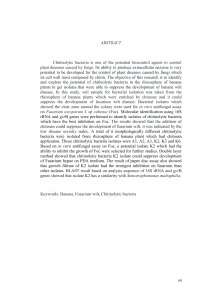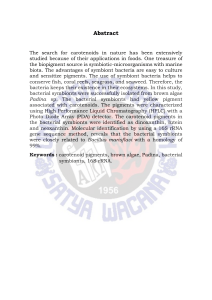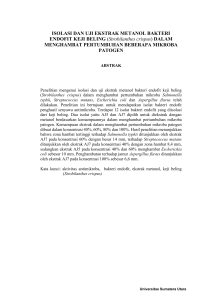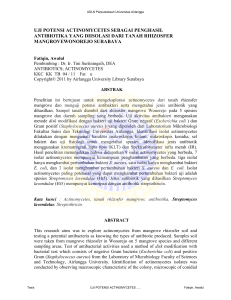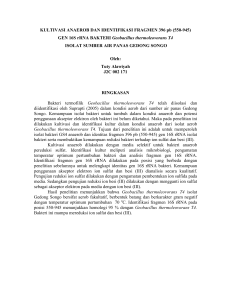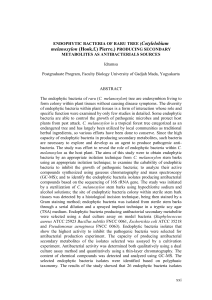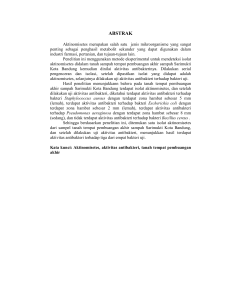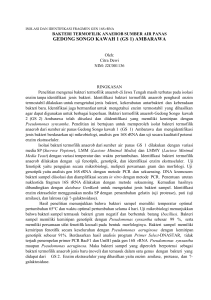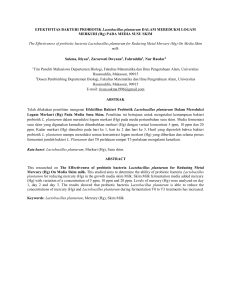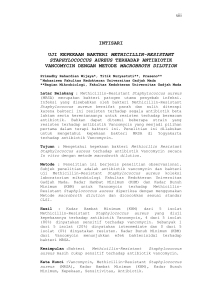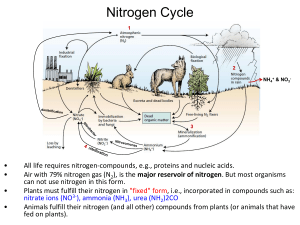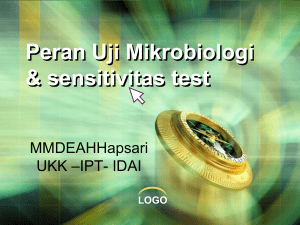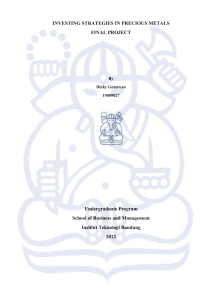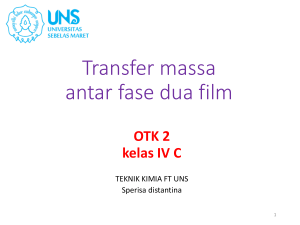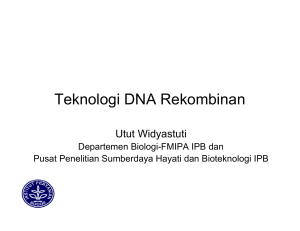UJI KEMAMPUAN ISOLAT BAKTERI TERMOFILIK ASAL KALI
advertisement
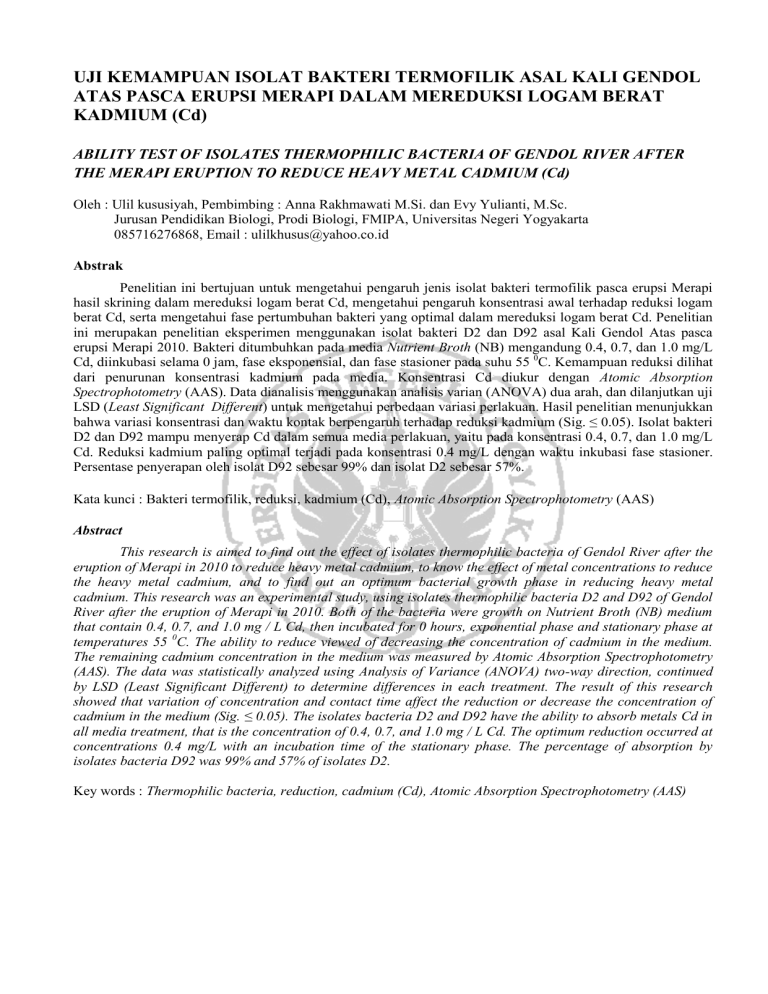
UJI KEMAMPUAN ISOLAT BAKTERI TERMOFILIK ASAL KALI GENDOL ATAS PASCA ERUPSI MERAPI DALAM MEREDUKSI LOGAM BERAT KADMIUM (Cd) ABILITY TEST OF ISOLATES THERMOPHILIC BACTERIA OF GENDOL RIVER AFTER THE MERAPI ERUPTION TO REDUCE HEAVY METAL CADMIUM (Cd) Oleh : Ulil kususiyah, Pembimbing : Anna Rakhmawati M.Si. dan Evy Yulianti, M.Sc. Jurusan Pendidikan Biologi, Prodi Biologi, FMIPA, Universitas Negeri Yogyakarta 085716276868, Email : [email protected] Abstrak Penelitian ini bertujuan untuk mengetahui pengaruh jenis isolat bakteri termofilik pasca erupsi Merapi hasil skrining dalam mereduksi logam berat Cd, mengetahui pengaruh konsentrasi awal terhadap reduksi logam berat Cd, serta mengetahui fase pertumbuhan bakteri yang optimal dalam mereduksi logam berat Cd. Penelitian ini merupakan penelitian eksperimen menggunakan isolat bakteri D2 dan D92 asal Kali Gendol Atas pasca erupsi Merapi 2010. Bakteri ditumbuhkan pada media Nutrient Broth (NB) mengandung 0.4, 0.7, dan 1.0 mg/L Cd, diinkubasi selama 0 jam, fase eksponensial, dan fase stasioner pada suhu 55 0C. Kemampuan reduksi dilihat dari penurunan konsentrasi kadmium pada media. Konsentrasi Cd diukur dengan Atomic Absorption Spectrophotometry (AAS). Data dianalisis menggunakan analisis varian (ANOVA) dua arah, dan dilanjutkan uji LSD (Least Significant Different) untuk mengetahui perbedaan variasi perlakuan. Hasil penelitian menunjukkan bahwa variasi konsentrasi dan waktu kontak berpengaruh terhadap reduksi kadmium (Sig. ≤ 0.05). Isolat bakteri D2 dan D92 mampu menyerap Cd dalam semua media perlakuan, yaitu pada konsentrasi 0.4, 0.7, dan 1.0 mg/L Cd. Reduksi kadmium paling optimal terjadi pada konsentrasi 0.4 mg/L dengan waktu inkubasi fase stasioner. Persentase penyerapan oleh isolat D92 sebesar 99% dan isolat D2 sebesar 57%. Kata kunci : Bakteri termofilik, reduksi, kadmium (Cd), Atomic Absorption Spectrophotometry (AAS) Abstract This research is aimed to find out the effect of isolates thermophilic bacteria of Gendol River after the eruption of Merapi in 2010 to reduce heavy metal cadmium, to know the effect of metal concentrations to reduce the heavy metal cadmium, and to find out an optimum bacterial growth phase in reducing heavy metal cadmium. This research was an experimental study, using isolates thermophilic bacteria D2 and D92 of Gendol River after the eruption of Merapi in 2010. Both of the bacteria were growth on Nutrient Broth (NB) medium that contain 0.4, 0.7, and 1.0 mg / L Cd, then incubated for 0 hours, exponential phase and stationary phase at temperatures 55 0C. The ability to reduce viewed of decreasing the concentration of cadmium in the medium. The remaining cadmium concentration in the medium was measured by Atomic Absorption Spectrophotometry (AAS). The data was statistically analyzed using Analysis of Variance (ANOVA) two-way direction, continued by LSD (Least Significant Different) to determine differences in each treatment. The result of this research showed that variation of concentration and contact time affect the reduction or decrease the concentration of cadmium in the medium (Sig. ≤ 0.05). The isolates bacteria D2 and D92 have the ability to absorb metals Cd in all media treatment, that is the concentration of 0.4, 0.7, and 1.0 mg / L Cd. The optimum reduction occurred at concentrations 0.4 mg/L with an incubation time of the stationary phase. The percentage of absorption by isolates bacteria D92 was 99% and 57% of isolates D2. Key words : Thermophilic bacteria, reduction, cadmium (Cd), Atomic Absorption Spectrophotometry (AAS)
